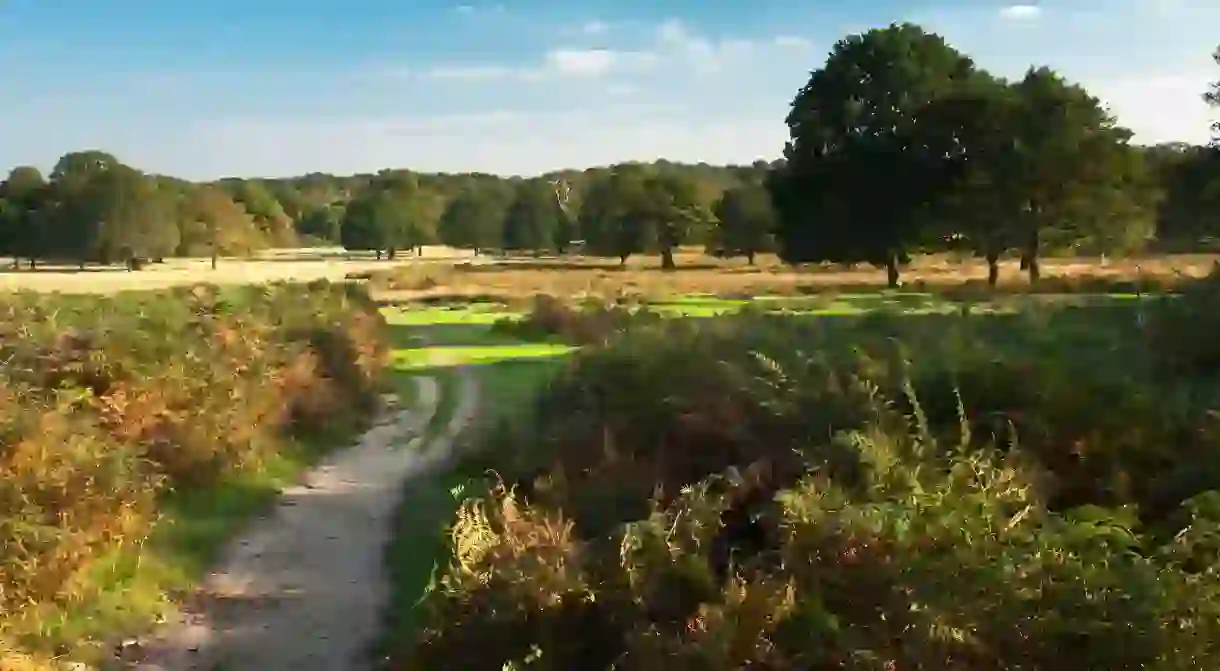Escape the City: London's Natural Green Spaces and Parks

London’s parks and green spaces have always been immensely popular with tourists and locals alike regularly flocking to the green spaces to get some fresh air. From hidden squares surrounded by townhouses, to the pleasant, cultivated Royal Parks and the gentle rolling hills, London is actually one of the world’s greenest cities. Here, Culture Trip explores the best natural spaces offered in the city.
The Royal Parks of Zone 1
London may be one of Europe’s biggest cities, but it’s also surprisingly green, even right in its centre. In Zone 1 alone, there are four Royal Parks – Hyde Park, Regent’s Park and Primrose Hill, St. James’s Park and Green Park. While their pristine and well-kept nature, combined with the constant stream of tourists and suit-wearing office workers, means they cannot entirely be called “natural”, Hyde Park and Regent’s Park especially are unexpectedly large and can lure even the most avid city-dweller into thinking they’re on a country walk. Ideal for lunch breaks away from the office and lazy afternoons on every other day, the Royal Parks are full of dog walkers, fitness enthusiasts and book readers, and they contain enough green space, footpaths and wooden benches to cater for all of these activities. Expect to find manicured flower beds, grassy fields, small lakes and plenty of ducks in London’s most famous parks.
Various locations
Clissold Park
Church, Park
Greenwich Park
Park, Museum

Hampstead Heath
Swimming Pool, Park, Ruins, Natural Feature
Get off the bus at Hampstead Heath and you’ll feel a long way from the bustle of city life. Already one of London’s greenest, leafiest and most attractive suburbs, Hampstead is made extra special by the presence of the heath. Dense woodland, muddy fields and meandering dirt pathways all combine to make Hampstead Heath feel that bit wilder than London’s other parks – there probably aren’t many other places where Londoners can justify wearing wellington boots, after all! The centre of the Heath is perhaps one of the only places in London where the sound of traffic can no longer be heard. But the city is never too far away – stand at the top of the hill on a clear day, and you’ll be able to see as far as the Shard and the Square Mile.
Highgate Village and Waterlow Park
Park
Richmond Park
Park

Thames Path
The Thames Path follows Britain’s most famous river for an impressive 184mi (135km) from its source in the Cotswold Hills all the way out to the Thames Barrier by the sea, passing not only through Central London but also through quaint villages, grassy parks and unspoilt countryside on its way. While no one is expecting you to complete the whole path – at least not in one go – the path’s accessibility from London means that a short train, bus or even boat ride can take you out to the bustling, restaurant-laden riverbank of Kingston; the pleasant serenity of Hampton Court Palace’s gardens; or the natural beauty of the Chiltern and Cotswold Hills.
Various locations
Day trips out of London
Sometimes it seems like London’s suburbs and zones go on forever. However, what visitors to the city don’t often get to explore is the greener, calmer and altogether more natural environment outside of London. This starts with the Green Belt, a strip of land circling London on which building is highly restricted to protect the natural environment and ecology of the area. In this area, plenty of small villages and green forests can be explored – all reached in less than an hour by train from central London.
Venture just a little further away from the city and you can reach some surprisingly remote and beautiful areas. To the south, the North Downs, the Surrey Hills, and the South Downs, Britain’s newest National Park, are all reachable in less than two hours by train or car, making them ideal for day trips out to the countryside. To the west, the Chiltern Hills, an Area of Outstanding Natural Beauty, can also be reached by just a short train or car journey. Many people commute into the city from these areas daily, so transport connections are good, and small towns with plenty of amenities have built up around the areas, but their protected status prevents their natural beauty from being destroyed.
Various locations














